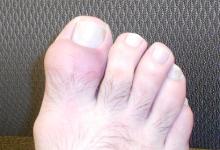Romosozumab vs Alendronate in Postmenopausal Osteoporosis Save

Poster 318 presented at the ACR on Sunday morning caught attention of many, highlighting updates in phase 3 active controlled study of romosozumab vs alendronate in patients with postmenopausal osteoporosis with high risk of fracture.
While previous phase 2 FRAME study showed excellent efficacy of romosozumab comparing to bisphosphonates and relatively low risk of adverse events, more recent report is concerning for high incidence of cardiovascular events in romosozumab treated patients.
This multicenter double-blind study enrolled women with severe postmenopausal osteoporosis complicated by moderate to severe hip and vertebral fractures. 4093 women were randomized 1:1 to receive 210 mg of romosuzumab sq monthly or oral alendronate 70 mg weekly for 12 months, followed by an open label alendronate therapy on both. Treatment with Romo significantly increased BMD at all sites measured, at months 12 and 24 vs ALN alone (LS BMD increased 15.3 %in Romo group at 24mo vs 7.2% ALN; and 6% vs 2.3% in FN in Romo vs ALN respectively).
While overall adverse events were balanced between groups (AFF and ONJ), study revealed alarming increase in Cardiovascular (CV) serious adverse events (SAEs) in Romo group: at 12 months the subject incidence was 2.5% in the Romo group vs 1.9% in the ALN group with cardiac ischemic events at 0.8% vs 0.3% and cerebrovascular events at 0.8% vs 0.3%, respectively.
All in all, while romosuzumab followed by ALN appears to be superior to ALN alone in risk reduction of vertebral, clinical, nonvertebral, and hip fractures, alarming imbalance in CV SAEs compared with ALN rises concerns.
Given this was not observed in the previous placebo-controlled 7180-patient FRAME study, increased risk of CV SAEs calls for further investigation.







If you are a health practitioner, you may Login/Register to comment.
Due to the nature of these comment forums, only health practitioners are allowed to comment at this time.